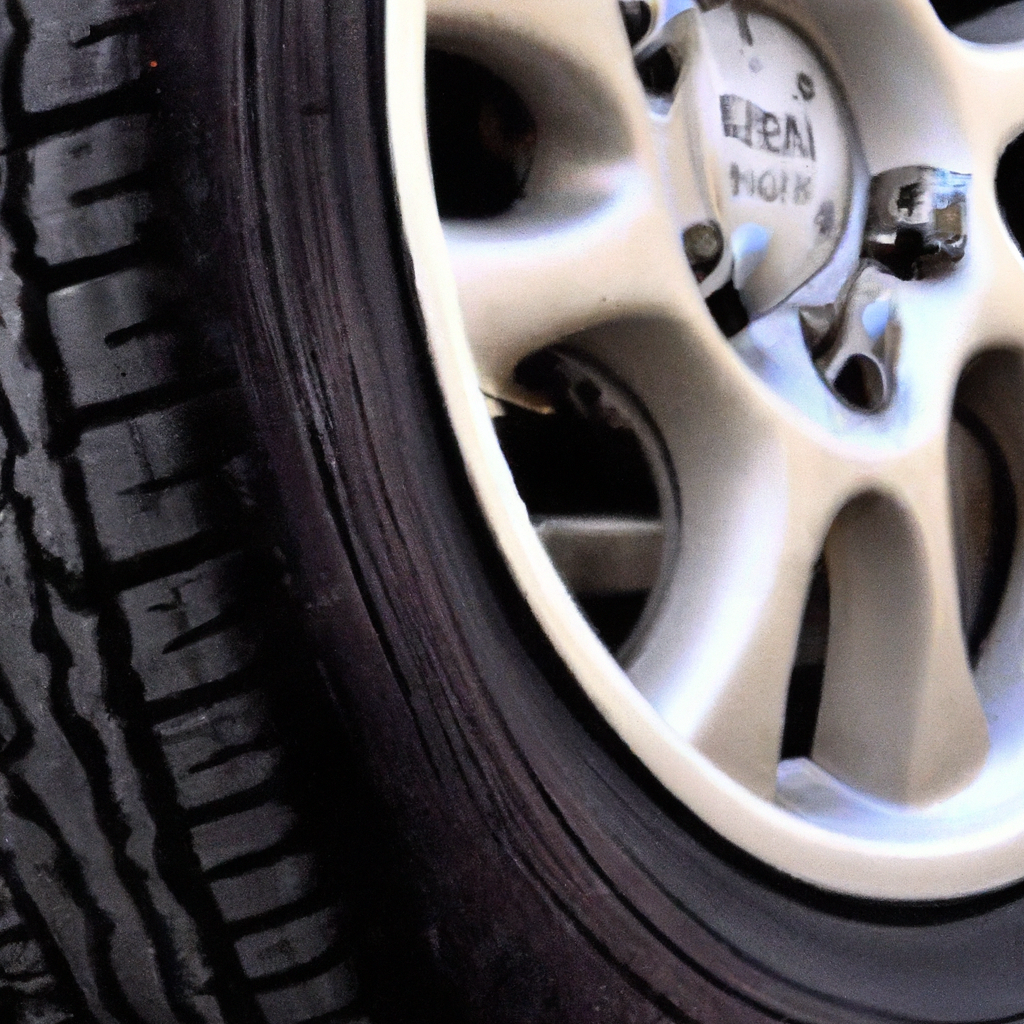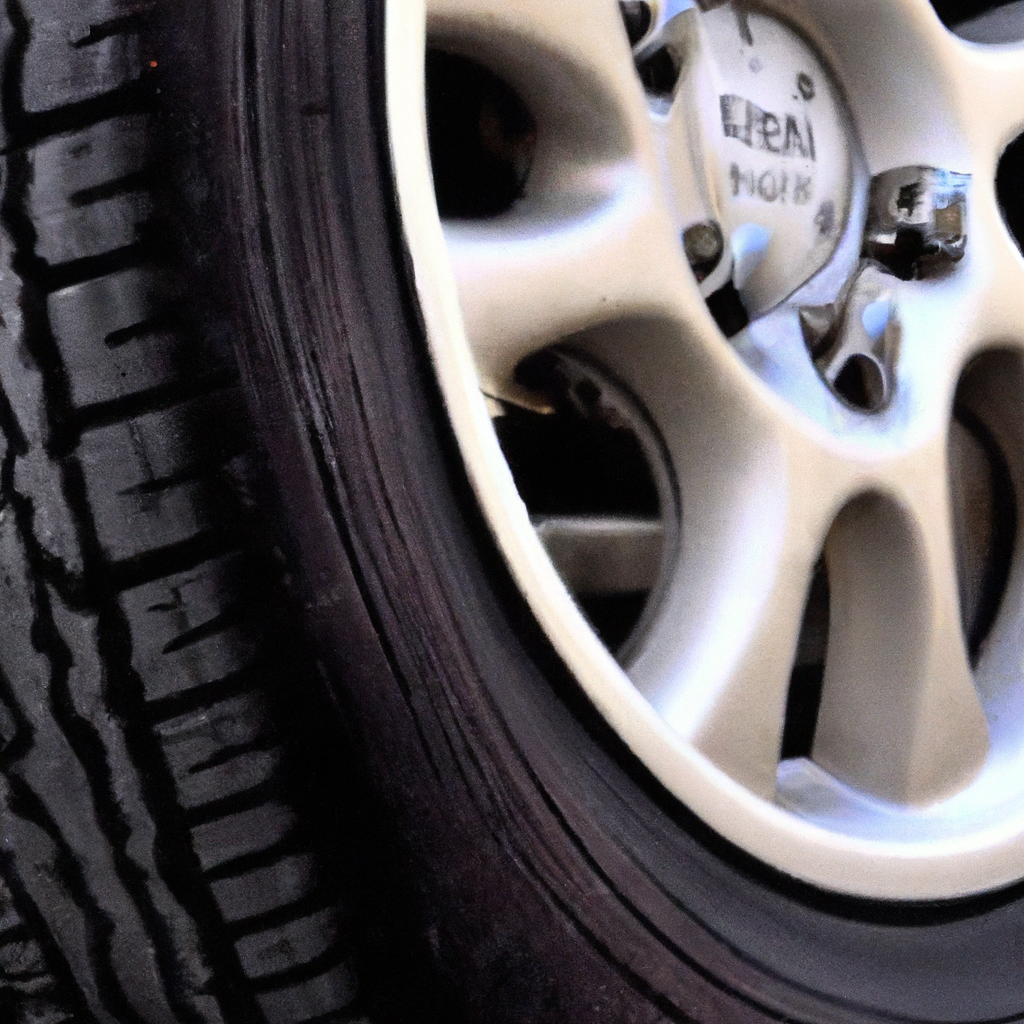Imagine cruising down the road without a worry in the world. Suddenly, you feel a slight vibration in the steering wheel. Immediately, your mind begins to race – is it a flat tire? If you have run-flat tires, you might be saved from one of the most dreaded roadside emergencies. But have you ever wondered how these specialized tires affect your vehicle’s TPMS (Tire Pressure Monitoring System)? In this article, we will take a closer look at the impact of run-flat tires on your TPMS and understand why keeping an eye on tire pressure is more important than ever.
Run-flat Tires Overview
Run-flat tires are a revolutionary development in the world of automotive technology. These tires are specifically designed to allow vehicles to continue driving even after experiencing a puncture or loss of tire pressure. Unlike traditional tires, which can become completely deflated in the event of a puncture, run-flat tires have reinforced sidewalls that support the weight of the vehicle, allowing it to maintain control and continue driving for a limited distance. This article will provide a comprehensive overview of run-flat tires and their compatibility with TPMS.
Definition of run-flat tires
Run-flat tires are a type of tire that is designed to temporarily support the weight of a vehicle even after experiencing a puncture or loss of tire pressure. They are constructed with reinforced sidewalls that provide additional support, allowing them to bear the weight of the vehicle and continue functioning for a limited distance, typically up to 50 miles. This feature not only provides drivers with the convenience of being able to reach a safe location to replace or repair the tire but also eliminates the need to carry a spare tire or use a jack.
Features and benefits of run-flat tires
Run-flat tires offer several features and benefits that make them a popular choice among drivers. Firstly, their ability to maintain vehicle control even after a puncture or tire pressure loss provides a higher level of safety. This minimizes the risk of accidents or vehicle damage due to sudden tire failure. Additionally, run-flat tires eliminate the need for a spare tire, reducing the overall weight of the vehicle and freeing up storage space. Furthermore, the convenience of being able to drive for a limited distance even with a flat tire is invaluable in situations where immediate tire replacement or repair may not be readily available.
Types of run-flat tire systems
There are several types of run-flat tire systems available in the market today. One of the most common systems is the self-supporting system, which utilizes heavily reinforced sidewalls to bear the weight of the vehicle in the event of a puncture or loss of tire pressure. Another type is the self-sealing system, which features a special lining inside the tire that can seal small punctures and prevent air leakage. Lastly, there is the auxiliary supported system, which incorporates an additional support ring on the wheel to help carry the weight of the vehicle in the event of a flat tire. Each type of run-flat tire system has its own unique advantages and considerations, and drivers should choose the system that best suits their specific needs and driving conditions.
TPMS (Tire Pressure Monitoring System) Overview
TPMS, or Tire Pressure Monitoring System, is an advanced technology designed to monitor the air pressure in a vehicle’s tires. Its primary purpose is to provide drivers with real-time information about the tire pressure to ensure optimal safety and performance. TPMS continuously monitors the air pressure in each tire and alerts the driver if there is a significant deviation from the recommended pressure levels. This article will delve into the definition, components, benefits, and compatibility of TPMS with run-flat tires.
Definition and purpose of TPMS
TPMS is a sensor-based system that constantly monitors the air pressure in a vehicle’s tires. Its purpose is to alert the driver if the tire pressure falls below or exceeds the recommended levels. By doing so, TPMS helps prevent tire-related accidents, such as blowouts or loss of control, which can occur due to underinflated or overinflated tires. The system typically utilizes sensors mounted inside each tire that transmit tire pressure data to a central control module in the vehicle. The control module then communicates the information to the driver through a dashboard display or warning lights.
Components of TPMS
TPMS consists of several key components that work together to monitor and communicate tire pressure information. The main components of TPMS include the tire pressure sensors, the central control module, and the driver interface. Tire pressure sensors are small devices installed inside each tire that measure the air pressure and transmit the data to the control module. The control module processes the information received from the sensors and sends alerts to the driver when necessary. The driver interface, which can be a dashboard display or warning lights, provides real-time tire pressure readings and alerts to the driver.
Benefits of TPMS
TPMS offers a wide range of benefits to both drivers and vehicles. The primary benefit is enhanced safety. By alerting drivers to abnormal tire pressure levels, TPMS helps prevent accidents that can occur due to tire blowouts, loss of control, or excessive tire wear. Additionally, TPMS can improve fuel efficiency by ensuring that tires are properly inflated, reducing rolling resistance and optimizing fuel consumption. TPMS also promotes longer tire life by preventing premature tire wear caused by underinflation or overinflation. Moreover, TPMS reduces the overall maintenance costs associated with tire replacement and repairs.

Compatibility of Run-flat Tires and TPMS
When it comes to the compatibility between run-flat tires and TPMS, there are several factors to consider. This section will discuss the relationship between TPMS sensors and run-flat tires, the differences in TPMS installation for run-flat tires, and the effectiveness of TPMS when used with run-flat tires.
TPMS sensors and run-flat tires
TPMS sensors play a crucial role in monitoring the tire pressure, and their compatibility with run-flat tires is essential. In most cases, run-flat tires can accommodate the installation of TPMS sensors without any compatibility issues. However, it is important to consult the tire manufacturer’s guidelines to ensure that specific sensors are recommended for use with run-flat tires. Some run-flat tires may require specific sensor types or modifications to accommodate the reinforced sidewalls or unique construction of the tires.
Differences in TPMS installation for run-flat tires
The installation process for TPMS sensors on run-flat tires may differ slightly from that of traditional tires. Since run-flat tires have reinforced sidewalls, it is crucial to ensure that the sensors are properly installed in a way that does not damage or interfere with the structural integrity of the tire. The installation of TPMS sensors on run-flat tires should be carried out by trained professionals who are familiar with the specific requirements and guidelines provided by the tire and TPMS manufacturers.
Effectiveness of TPMS with run-flat tires
TPMS remains just as effective with run-flat tires as it is with traditional tires. The system continuously monitors the tire pressure, regardless of the tire type or design. However, it is worth noting that TPMS may require recalibration or customization in some cases to accurately measure and interpret the tire pressure data from run-flat tires. This ensures that the driver receives accurate and reliable tire pressure information, enabling them to make informed decisions regarding tire maintenance and safety.
TPMS Sensors and Run-flat Tires
To fully understand the compatibility between TPMS sensors and run-flat tires, it is important to delve into the role of TPMS sensors, the placement and installation of TPMS sensors on run-flat tires, and the challenges associated with TPMS sensor replacement for run-flat tires.
Role of TPMS sensors
TPMS sensors are responsible for measuring the air pressure in each tire and transmitting the data to the central control module. Within each sensor, there is a pressure sensor that detects the tire pressure, a temperature sensor that measures the tire temperature, and a transmitter that relays the information to the control module. These sensors play a critical role in ensuring the accuracy and reliability of the TPMS system.
Placement and installation of TPMS sensors on run-flat tires
The placement and installation of TPMS sensors on run-flat tires follow a similar process to that of traditional tires. However, due to the reinforced sidewalls and unique construction of run-flat tires, it is vital to position the sensors in a location that allows them to function optimally without compromising the tire’s integrity. The tire manufacturer’s guidelines should be followed to determine the ideal placement and installation method for TPMS sensors on run-flat tires.
Challenges in TPMS sensor replacement for run-flat tires
Replacing TPMS sensors on run-flat tires can present some challenges. The reinforced sidewalls of run-flat tires may require specialized tools or techniques to remove and replace the sensors. Additionally, the complexity of run-flat tire systems may require specific programming or calibration of the new TPMS sensors to ensure compatibility and accurate tire pressure readings. It is recommended to seek professional assistance or consult the tire and TPMS manufacturers for guidance when replacing TPMS sensors on run-flat tires.

TPMS Programming and Run-flat Tires
To ensure the proper functioning of TPMS with run-flat tires, specific considerations must be taken into account during the programming process. This section will discuss the TPMS programming process, special considerations for run-flat tires, and any compatibility issues that may arise during TPMS programming for run-flat tires.
TPMS programming process
TPMS programming typically involves initializing or resetting the system to ensure that it recognizes the newly installed TPMS sensors and accurately measures tire pressure. The programming process varies depending on the specific vehicle and TPMS system. It often involves accessing the vehicle’s onboard computer system and using specialized software or tools to communicate with the TPMS system. It is important to follow the manufacturer’s instructions and guidelines for proper TPMS programming.
Special considerations for run-flat tires
When programming TPMS for run-flat tires, it is essential to consider the unique characteristics and requirements of these tires. Run-flat tires may have different pressure thresholds or recommended pressure levels compared to traditional tires. Therefore, the TPMS programming should be customized to accommodate the specific recommendations for run-flat tires. Failure to do so may result in inaccurate tire pressure readings and compromised safety.
Compatibility issues with TPMS programming for run-flat tires
Compatibility issues between TPMS programming and run-flat tires are relatively rare; however, they can arise if the TPMS system is not properly calibrated to the specific run-flat tire specifications. This can lead to inaccurate tire pressure readings and potentially compromise the safety benefits offered by run-flat tires. To mitigate compatibility issues, it is important to consult the vehicle manufacturer’s guidelines and utilize specialized TPMS programming tools or software that are compatible with run-flat tire systems.
TPMS Monitoring and Run-flat Tires
TPMS monitoring capabilities play a crucial role in ensuring the safety and performance of run-flat tires. This section will explore the monitoring capabilities of TPMS, the detection of pressure loss in run-flat tires, and the limitations of TPMS when used with run-flat tires.
TPMS monitoring capabilities
TPMS continuously monitors the tire pressure in real-time, providing drivers with valuable information regarding the current state of their tires. It can detect both gradual pressure loss over time and sudden pressure drops due to a puncture or blowout. The monitoring capabilities of TPMS enable drivers to take immediate action to address any tire pressure abnormalities, reducing the risk of accidents and tire-related incidents.
Detection of pressure loss in run-flat tires
TPMS is designed to detect pressure loss in all types of tires, including run-flat tires. The system relies on the pressure sensors within each tire to measure the air pressure and compare it to the recommended levels. If there is a significant deviation from the recommended pressure, TPMS will alert the driver through a visual display or warning lights. This ensures that drivers are promptly informed of any pressure loss in their run-flat tires, allowing them to take appropriate action.
Limitations of TPMS with run-flat tires
While TPMS is highly effective in detecting pressure loss and ensuring tire safety, it does have some limitations when used with run-flat tires. Run-flat tires are designed to allow vehicles to continue driving even after a puncture or loss of tire pressure, which means that the TPMS may not immediately detect a significant pressure loss. This is due to the reinforced sidewalls of run-flat tires, which can temporarily support the weight of the vehicle even with reduced tire pressure. Therefore, it is important for drivers to regularly check their tires, visually inspecting them for any signs of damage or abnormal wear, in addition to relying on the TPMS alerts.

Run-flat Tires and TPMS Alerts
TPMS alerts provide vital information to drivers, allowing them to take immediate action in the event of tire pressure abnormalities. This section will address the unique considerations for TPMS alerts on run-flat tires, interpreting TPMS alerts for run-flat tires, and the importance of TPMS alerts for maintaining the safety and performance of run-flat tires.
Unique considerations for TPMS alerts on run-flat tires
TPMS alerts on run-flat tires may require additional attention and consideration due to the extended driving capabilities of these tires in the event of a puncture or loss of tire pressure. The TPMS alerts may not be as urgent or immediate as those for traditional tires. However, it is important for drivers to take all TPMS alerts seriously and respond accordingly to prevent further tire damage or potential safety hazards.
Interpreting TPMS alerts for run-flat tires
Interpreting TPMS alerts for run-flat tires requires a thorough understanding of the specific run-flat tire system being used. Drivers should refer to the vehicle and tire manufacturer’s guidelines to determine the recommended course of action in response to TPMS alerts. While run-flat tires offer extended driving capabilities, it is essential to address any tire pressure abnormalities in a timely manner to ensure the continued safety and performance of the tires.
Importance of TPMS alerts for run-flat tires
TPMS alerts serve as an early warning system for run-flat tires, allowing drivers to take proactive measures to address any tire pressure abnormalities. Promptly responding to TPMS alerts can prevent further damage to the tires and mitigate the risk of accidents or loss of control. The importance of TPMS alerts cannot be overstated, as they provide invaluable information that drivers can rely on to ensure the optimal performance and longevity of their run-flat tires.
Maintenance and Troubleshooting of TPMS with Run-flat Tires
To ensure the longevity and effectiveness of TPMS with run-flat tires, regular maintenance and troubleshooting are essential. This section will cover the importance of regular TPMS maintenance for run-flat tires, common TPMS issues and troubleshooting, and best practices for TPMS maintenance on run-flat tires.
Regular maintenance for TPMS with run-flat tires
Regular maintenance is crucial for the proper functioning of TPMS with run-flat tires. This includes regular tire inspections, checking for any damage or abnormal wear, and ensuring proper tire inflation. It is also important to periodically calibrate or reset the TPMS system to ensure accurate readings. Referencing the vehicle and TPMS manufacturer’s guidelines for recommended maintenance intervals is essential in maintaining the reliability and effectiveness of TPMS for run-flat tires.
Common TPMS issues and troubleshooting
Despite the advanced technology of TPMS, issues may arise that require troubleshooting. Some common TPMS issues include sensor malfunctions, inconsistent readings, or warning lights that do not turn off. If such issues occur, it is recommended to first check the tire pressure manually to verify the accuracy of the TPMS readings. Additionally, ensuring that the tire valves are properly fitted and sealed can help prevent any air leakage that may affect TPMS readings. If issues persist, it is advisable to consult a professional technician with expertise in TPMS troubleshooting and repair.
Best practices for TPMS maintenance on run-flat tires
When maintaining TPMS for run-flat tires, there are several best practices to keep in mind. Regularly inspecting the tire sidewalls for any signs of damage or wear is essential to catch potential issues early. Additionally, checking the battery life of TPMS sensors and replacing them as recommended by the manufacturer is crucial to ensure accurate readings. Furthermore, staying up-to-date with the latest software updates and recalibrations for the TPMS system can help maintain its effectiveness and compatibility with run-flat tires.

Benefits of TPMS for Run-flat Tires
TPMS provides a range of benefits when used in conjunction with run-flat tires. This section will explore the enhanced safety provided by TPMS, optimizing run-flat tire performance with TPMS, and the impact on fuel efficiency and tire longevity.
Enhanced safety with TPMS
TPMS significantly enhances the safety of run-flat tires by continuously monitoring tire pressure and alerting drivers to any abnormalities. By providing real-time tire pressure information, TPMS enables drivers to address any pressure loss promptly, reducing the risk of accidents, blowouts, or loss of control. The enhanced safety provided by TPMS is particularly valuable when used with run-flat tires, as these tires are designed to allow safe driving even after experiencing a puncture or loss of pressure.
Optimizing run-flat tire performance with TPMS
TPMS is instrumental in optimizing the performance of run-flat tires. By constantly monitoring the tire pressure, TPMS ensures that the tires are properly inflated, which is crucial for their optimal performance and longevity. Underinflated or overinflated tires can result in increased rolling resistance, compromised handling, and premature wear and tear. TPMS alerts drivers to any deviations from the recommended pressure levels, allowing them to take corrective measures and maintain the optimal performance of their run-flat tires.
Improved fuel efficiency and tire longevity
Properly inflated tires contribute to improved fuel efficiency, and TPMS plays a vital role in achieving this. By alerting drivers to underinflated tires, TPMS promotes proper tire inflation, reducing rolling resistance and improving fuel consumption. Additionally, maintaining the recommended tire pressure prolongs the lifespan of run-flat tires by minimizing excessive wear and tear caused by incorrect inflation. This not only saves money on tire replacements but also contributes to a more sustainable approach to vehicle maintenance.
Conclusion
In conclusion, the compatibility between run-flat tires and TPMS is crucial for ensuring the optimal performance, safety, and longevity of these innovative tire systems. TPMS serves as an invaluable tool in maintaining the proper tire pressure, detecting pressure loss, and alerting drivers to any abnormalities. By understanding the unique considerations and maintenance requirements of TPMS with run-flat tires, drivers can fully harness the benefits offered by this advanced technology. With the enhanced safety, optimized tire performance, and improved fuel efficiency provided by TPMS, run-flat tires continue to revolutionize the driving experience.


